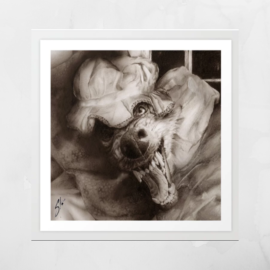
Twenty nineteen was, in many ways, the year of the fraud. A case in point: the college admissions scandal wherein Hollywood celebrity parents used fraudulent means (test taking trickery, mock photos, etc.) to get their youngsters into highbrow universities. Another: William Morrow editor and best-selling author Dan Mallory lied about his personal circumstances and took credit for the work of others. More: two documentaries were released about the infamous Fyre Festival, a brutal failure of a music event dreamed up by “serial fraudster” Billy McFarland. Less publicized: actor Jussie Smollett allegedly staged his own beating, and Instagrammer Caroline Calloway admitted to using Natalie Beach to create a huge share of her content, without credit or reasonable compensation. More unsavory frauds: Harvey Weinstein, Jeffrey Epstein, Prince Andrew, and the pres…never mind.
According to Merriam-Webster, fraud is the “intentional perversion of truth in order to induce another to part with something of value or to surrender a legal right.” Fraud and its perpetrators have, unfortunately, been with us longer than memory can stretch. In fact, many fairy tale villains are fraudsters. Let’s explore:

- Rapunzel’s captor is willing to destroy the one she claims to love in order to keep her from moving on. This is a pattern of domestic abuse all too familiar. The witch might be lonely, but she is pathologically controlling, dependent on her “daughter” to the point of denying the young women even an iota of agency. In order to maintain the status quo, she has convinced Rapunzel that she is, indeed, her mother, that the world beyond the tower is a dangerous place, and that only she, the witch-mother, can make her happy. The witch not only misrepresents herself and her intentions, she also recreates the world in her own image.
Guilty as charged: Mother Gothel
- What do little girls and baby goats have in common? They’re all kids. All kidding aside, Red Riding Hood and the seven little goats had the misfortune to come into contact with a hungry wolf (this guy really gets around). In Red’s story, the wolf impersonated her sweet old grandmother by donning that woman’s gown, cap and glasses. The seven little goats were left at home while their loving mother went out in search of food, saying of the wolf, “If he manages to get into the house, he’ll gobble you up, skin, hair, bones, and all. The old scoundrel often disguises himself, but you won’t have any trouble recognizing him, because he has a gruff voice and black feet.”1 But the crafty old fraudster used chalk to smooth his voice and the miller’s flour to whiten his feet. He fooled the wee ones and gobbled them up, all but one.
Guilty as charged: the big bad wolf
- Of course, it’s the nature of all fraudsters to be selfish, but some are so greedy they’re willing to dupe their own flesh and blood. Take the case of Hansel and Gretel’s father and mother, for instance. Like other fairy tale parents, they abandoned their children; but this pair pretended to be concerned for their offspring during two treks deep into the woods, built them a reassuring fire, and promised to return by dusk.
Guilty as charged: Mr. and Mrs. Woodcutter

- Though the advertising industry became a powerful force in the twentieth century, people (and fairy tale characters) have been making false claims forever. One of the clearest cases is that of the wily feline who sold a king a bill of goods in the form of a poor miller’s youngest son, a simpleton, around whom the cat created a fanciful tale of wealth and good fortune. Thereafter, the king’s daughter married the boy, whose worldly goods before marriage consisted of nothing more than the cat, a handsome face, and a good temperament.
Guilty as charged: Puss in Boots
- Ill-gotten gains are at the heart of a story that springs from many locations.
What makes “Rumpelstiltskin” particularly troubling for those who seek moral guidance for children in fairy tales is the way in which its plot turns on deception and greed. The miller tricks the king into thinking his daughter can spin straw into gold; the miller’s daughter misleads the king; the king marries because he lusts after gold. Finally, the queen not only dodges the terms of the contract…but also engages in a cruel game of playing dumb as she rehearses various names…
From The Annotated Brothers Grimm, edited by Maria Tatar, 256-257
Guilty as charged: the miller, and the king and queen
“Fraud, Part Two” will explore how the Grimm brothers, and other recorders of our most well known fairy tales, deceived us all. Coming in March, 2020.
- The Annotated Brothers Grimm, edited by Maria Tatar. (W.W. Norton & Company: New York), 31.
- Rapunzel and Puss in Boots Images by Prawny from Pixabay
(Cross posted at Luna Station Quarterly)
